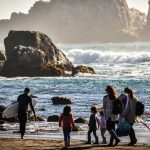Way down in the south of Chile, where the highway system winnows down to one sinuous road, much of it unpaved, lies one of our favorite parts of Patagonia. The Carretera Austral, or southern highway, connects the area near Puerto Montt with a string of tiny towns and hamlets through the region of Aysén. Here, some of the wildest, most untouched parts of Patagonia showcase landscapes that are uniquely Patagonian. Raging rivers, volcanoes, meandering streams, jagged peaks, snowcapped mountains, glaciers and thick forests all share space in one of Chile’s least settled regions.
One of our favorite parts of this area is the National Reserve of Cerro Castillo. This multi-spired granite mountain takes its name from it’s appearance, at a distance, that is similar to that of a castle (castillo). There is a multi-day hike that is accessed from a point along the carretera, just about 40 km south of the Balmaceda Airport, and this trip takes you through the Patagonian steppe for the adventure of a lifetime. For travelers with less time, or those that are not fans of camping, there are also two stellar day hikes along parts of the same route that allow you to stay in relative comfort in this far-flung part of the world.
For those who want to do the whole, four-to-five day circuit, here’s a little of what to expect. Nearly everyone does the hike starting from Ruta 7 south of the airport and ending in Cerro Castillo, though theoretically, it can be done from the other direction as well. There is some flexibility and a few more campsites, that you could visit to change this up a bit, but here is one option, and we explain where those day hikes fit in.
Day 1: Las Horquetas Grandes (Laguna Chiguay) to Camping Río Turbio
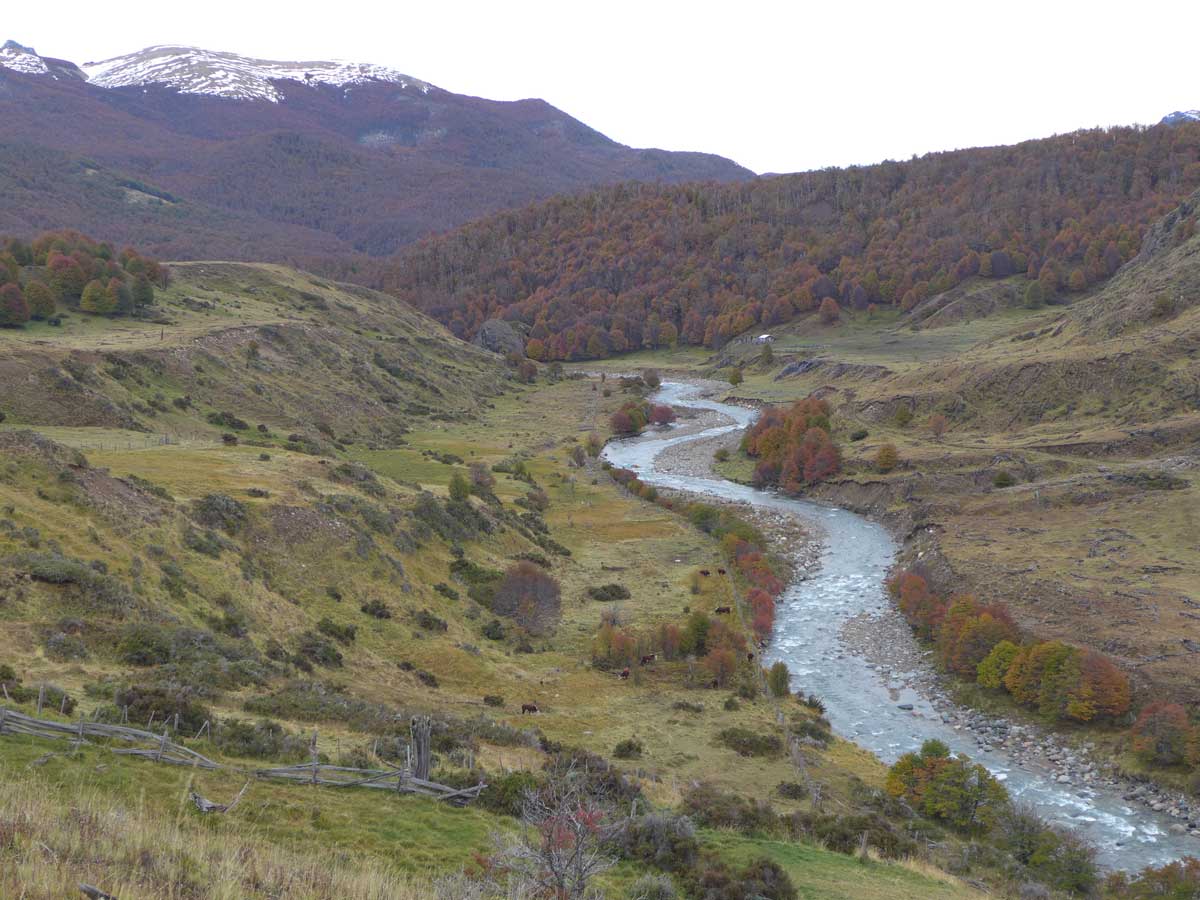
Day one is your introduction to wildest Patagonia with its gnarled beech trees (mostly lenga and ñirre), large open spaces, and ever-present rivers. On the first day, there are four river crossings through glacial meltwater, as you move further away from civilization and get the sense of being someplace truly untouched. The rivers vary in color, owing to the sediment and minerals they contain. This area is largely glacial, and you can almost imagine the slow-moving giants carving the valley. This first day of hiking is about six hours, and it’s important to note that Patagonian days can be short outside of summer, so an early start or overnight in the area before beginning of the hike is essential.
Day 2: Camping Río Turbio to Laguna Cerro Castillo
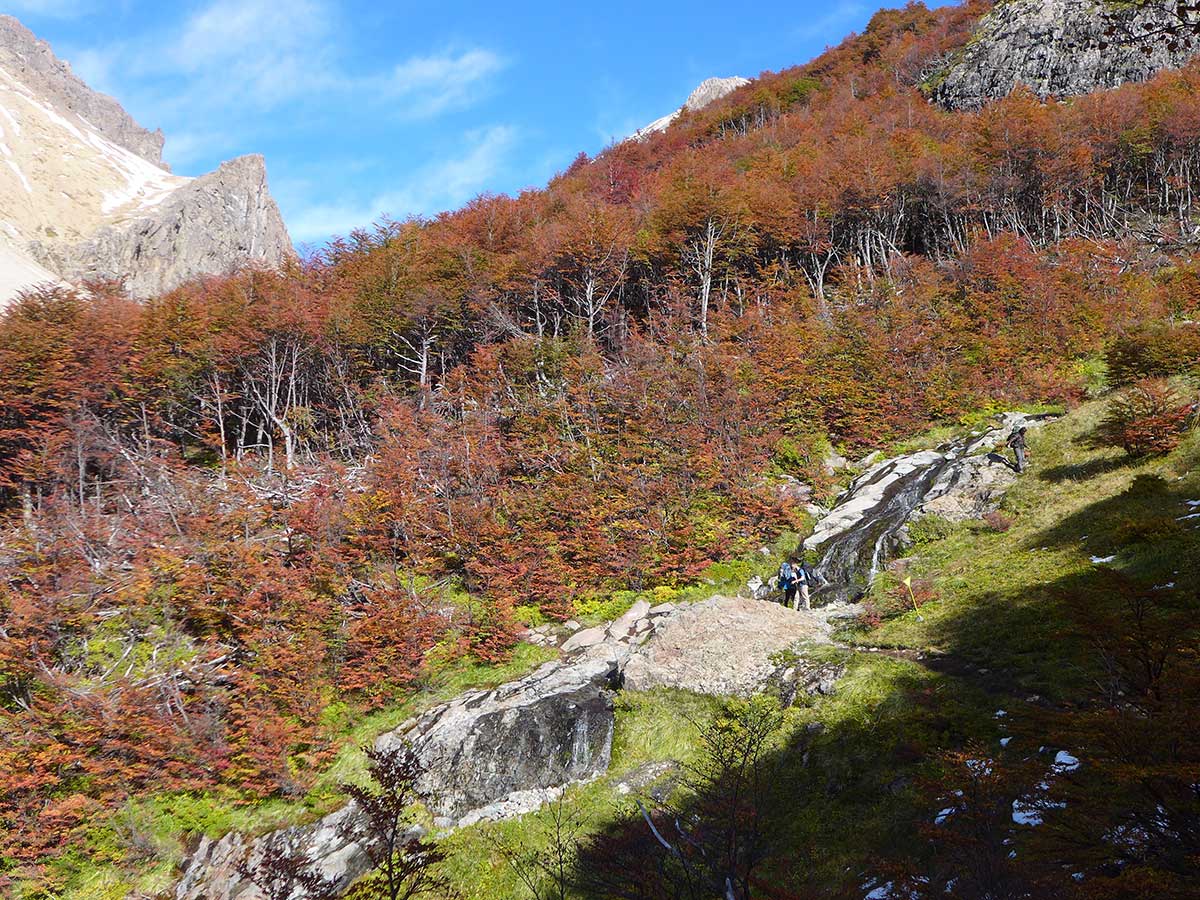
The hike continues along the river for a distance (keep an eye out for raspberries or the local calafate berry in season), and then the terrain turns more challenging, with the trail heading uphill through Arctic beech forests. Soon you are above the treeline and then the trail goes over a stunning, narrow mountain pass. It’s not unusual for there to be snow and inclement weather, and as anyone traveling to Patagonia knows, strong, gusty winds are to be expected at all times. The area of the mountain pass is particularly well-known for strong winds. Views are stark, and there are many pinnacle rock formations sculpted by millennia of Patagonian weather. After the pass, the trail takes an abrupt downhill, on a rocky surface that is in fact, atop the Peñon Glacier. There are a few optional detours to different lakes, or continue on to the protected campsite at Laguna Cerro Castillo to spend the night.
Day 3: Laguna Cerro Castillo to Campamento Porteadores
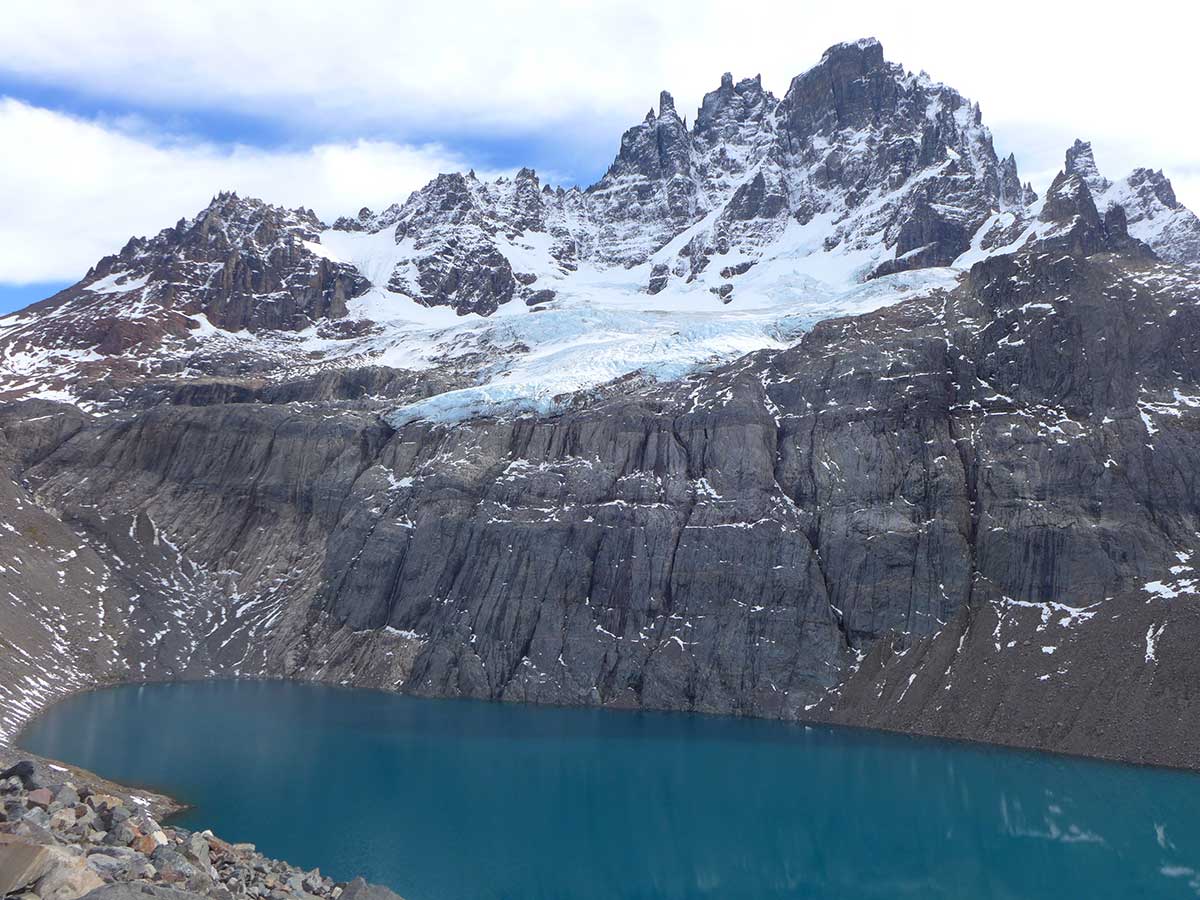
This day is marked by dense forests, a climb, a small waterfall on the right side of the trail and more climbing. The goal is the Laguna Cerro Castillo, which is also one of the day hikes possible to do from the village of Cerro Castillo. This is also a possible exit point from the trail if the weather turns, or time is short. Laguna Cerro Castillo is a perfect turquoise (or blue, depending on the day) pool up in the mountains, backed by part of the cordillera. There are views on this day of the Río Ibañez and also the Hudson Volcano, as well as expansive valley views to keep you motivated even as the hike is more challenging in parts. Spend the night at Camping Porteadores.
Day 4: Campamento Porteadores to Villa Cerro Castillo
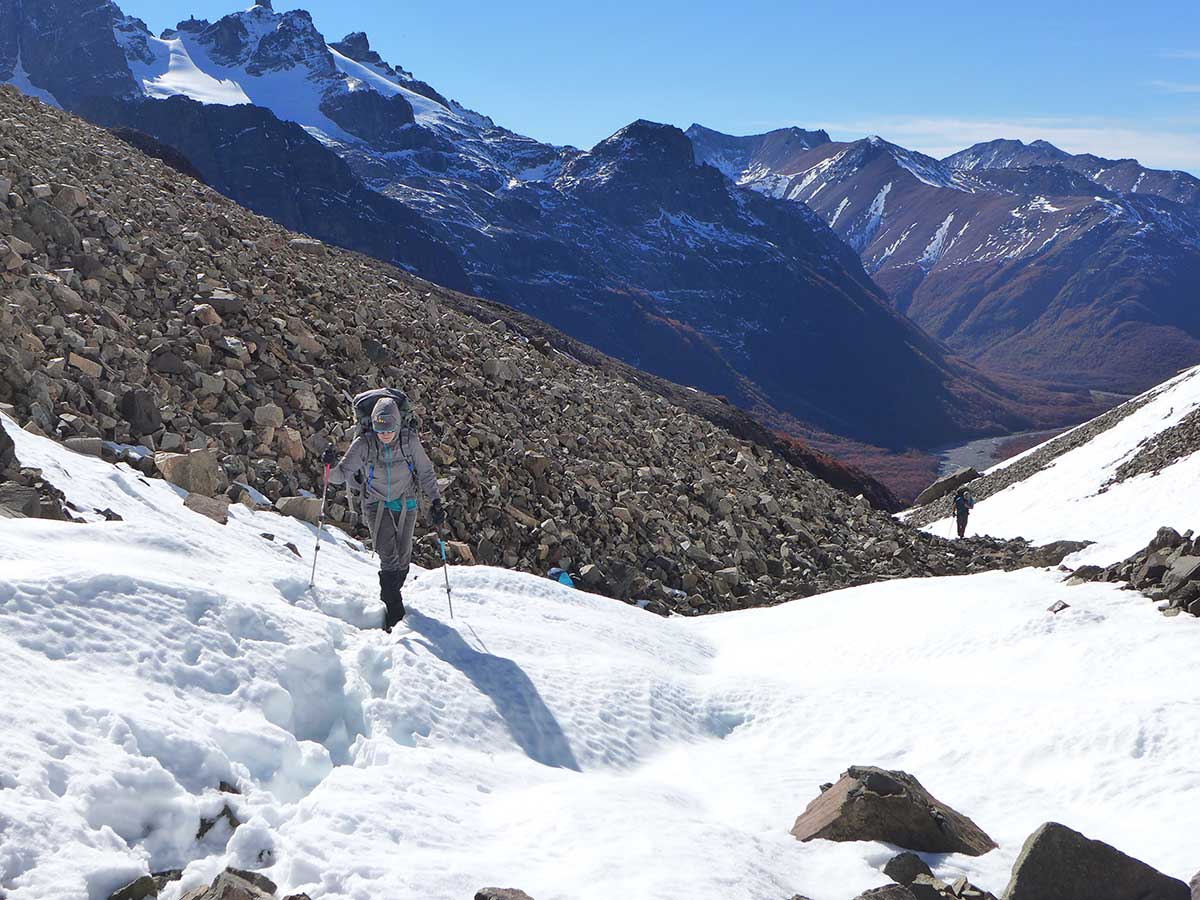
Here there is more uphill hiking, including a valley that many compare to Torres del Paine’s Valle Britanico. The hike here is a highly recommended—but optional—trip up to Laguna Duff. Laguna Duff is a less popular daytrip than Laguna Cerro Castillo, but is equally deserving of a visit, another perfect Patagonian lake high in the mountains and backed by jagged peaks. From here return down to the settlement and simple lodgings at Cerro Castillo, for a well-deserved meal, shower and rest.
People who do the circuit hike call out several things about it. That it is (for the moment) far less populated than some other popular Patagonian hikes, which means more time and space to feel at one with nature. They also talk about the beauty and the starkness, the sense of being in unspoiled nature, and the ability (and need) to stop and take in every moment as the terrain changes again and again. In the words of Roberto, who works at Upscape, “this is a hike not to conquer, but to truly enjoy.” In fact, though many people hike this trip in 4 days, you could easily spend more time up in the reserve.
The Cerro Castillo circuit is most often done in summer, but we’re particularly drawn to the autumn colors of this part of Chile. Though some of the following animals are shy, it is not unheard of to see huemules (a species of tiny deer endemic to Chile), foxes, skunks, wildcats and pumas and (most commonly) guanacos (a relative to the llama). Up above keep an eye out for Andean condors, buzzards, kestrels and parakeets as you take in the beauty of this 134,000-hectare national treasure.
